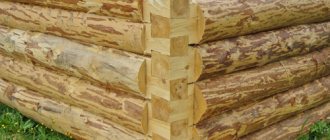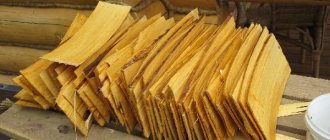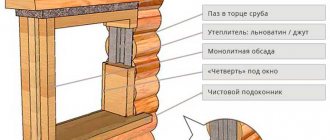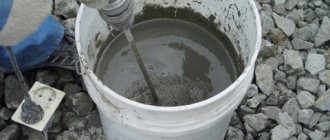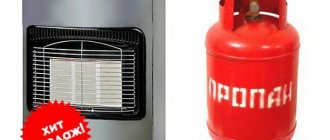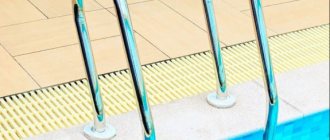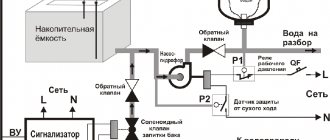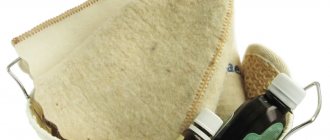Home |Reinforcement |Knitting reinforcement for a strip foundation
Date: January 14, 2019
Comments: 0
The service life of a building depends on a high-quality foundation reinforced with reinforcement. The reinforcement frame preserves the spatial configuration of the foundation, the most common option of which is a strip foundation. Tying reinforcement for a strip foundation is a serious construction operation that determines the durability of the building and its resistance to external factors.
Naturally, the correct choice of concrete for pouring the foundation is important. However, the quality of installation of reinforcement in the frame plays an equally important role. Correct knitting of reinforcement for a strip foundation ensures reliable fixation of steel bars to each other and constant spacing when pouring concrete.
To ensure the strength of the reinforcement cage, it is important to understand how to properly knit the reinforcement for the foundation. The method is available for beginner builders who have mastered the manual technique of fixing steel bars. Let us dwell on this operation in detail, consider how to knit the reinforcement, and how to knit it correctly.
Performing this operation will require certain skills and perseverance.
Preparatory activities
Having decided to independently carry out the work of fixing steel bars, perform the preparatory work:
- Calculate the load that the future foundation will bear. Considering the seriousness of the task, use the services of professionals.
- Based on the calculation results, select the required brand and diameter of the rods, which should not be less than 12-14 millimeters. The use of rods of class A3 will allow, when making a frame, to bend them by 90⁰ without cracks, and rods of class A2 - at an angle exceeding 90⁰, while maintaining their integrity.
- Calculate the need for tying wire and steel rods. The basis for determining the total volume of material is the pattern of tying reinforcement for a strip foundation.
- Take care of assistants, as the knitting process is quite labor-intensive and tedious.
What should the reinforcement be?
When laying the foundation, the safety factor is taken into account. A mandatory requirement is maximum resistance to climatic and mechanical factors.
Foundation frame
Requirements for fittings:
- It is allowed to replace the supporting rods. Possibly, if the load in the calculation does not exceed SNIP;
- with the correct construction of the base frame, it will not interfere with pouring;
- when installing reinforcement, the design step must be taken into account;
Anti-corrosion coating
- the structure must have an anti-corrosion coating;
- Movable “floating” connections of rods at frame intersections are not allowed. Applies to any connection method.
Methods for fixing rods
There are many ways to secure the steel bars of a mesh structure. Ensuring the immobility of the steel bars of the frame for concreting is carried out:
- electric welding, which changes the structure of the metal and does not guarantee the immobility of frame elements;
Rods with a ribbed surface facilitate the knitting process
- purchased metal clamps with a diameter of up to 4 mm, having a loop corresponding to the size of the rods and a clamp (hook). The use of connectors increases productivity, but requires additional costs. Their use does not require the use of tools;
- elastic clamps made of plastic, allowing you to quickly connect the rods. The disadvantage is increased fragility at subzero temperatures, as well as the possibility of damaging the integrity of the fastenings when moving along the frame;
- knitting wire with a diameter of 1 to 2 mm, made of annealed steel with low carbon content. It is optimal to use material with a diameter of 0.8-1.4 mm, which allows you to knit reinforcement for the frame without additional effort. A material with a diameter of 1 mm is not strong enough, and with a diameter of 2 mm the forces increase significantly.
Knitting methods
Knitting reinforcement for a strip foundation using soft and easy-to-use wire is the optimal solution. Let's take a closer look at this option.
Scheme
The constant movement of soil puts serious pressure on the strip foundation. In order for it to firmly withstand such loads, and also eliminate the sources of crack formation at the planning stage, experts recommend taking care of the correctly chosen reinforcement scheme. The foundation reinforcement scheme is a specific arrangement of axial and perpendicular rods, which are assembled into a single structure.
SNiP No. 52-01-2003 clearly discusses how reinforcing materials are laid in the foundation, with what steps in different directions.
It is worth considering the following rules from this document:
- the step of laying the rods depends on the diameter of the reinforcement product, the dimensions of the crushed stone granules, the method of laying the concrete solution and its compaction;
- working hardening step is a distance that is equal to two cross-sectional heights of the reinforcing tape, but not more than 40 cm;
- transverse strengthening - this distance between the rods is half the width of the section itself (no more than 30 cm).
Knitting methods
Methods of fastening steel frame elements are carried out:
- Completely manual, which requires physical effort, but provides reliable fastening at low cost.
- Using semi-automatic methods that facilitate and speed up the fixation process, requiring additional acquisition costs.
If the rods are tied manually and fastening with loops is used, the elements will have to be connected separately
The manual fastening option is carried out using the following tool:
- wire cutters or pliers, the working surface of which is rounded;
- a self-made hook from a welding electrode or rod with a diameter of 3-4 millimeters;
- a manual reversible device, the rotation of which is carried out by reciprocating movement of the handle;
- special pliers, the operating principle of which is similar to a reversible tool;
- a purchased crochet hook, the use of which is one of the simplest options.
Semi-automatic methods of fixing frame rods are carried out using the following devices:
- An automatic knitting gun that ensures high efficiency and quality of work.
- A screwdriver or electric drill equipped with a special attachment that allows you to quickly tie steel bars. You can use a regular nail bent at a right angle.
Let's consider the features of the main types of manual and semi-automatic tools, with the help of which a bunch of reinforcement for the foundation is carried out.
Wire selection
Knitting wire
Wire is used to fasten the frame rods. The product is not manufactured specifically for tying and is a type of rolled metal according to GOST 32.82 - 1974. The wire rod is suitable for tying reinforcement in a structure.
Material of round cross-section is taken, the diameter is determined individually for each frame or is accepted according to the project. If it is not possible to buy burnt wire, you can strengthen the existing one by holding it over the flame for 25 - 30 minutes, then leave it to cool in the open air.
Experts advise folding the knitting rod several times, so that between the folds there is the desired size (30 cm), and then using a grinder to cut off the folded sections. This speeds up the process of cutting the knitting wire rod to size, so as not to measure the required length each time.
It is difficult to determine the exact wire consumption, so preliminary calculations are used. The number of nodes is taken at the junction of longitudinal elements with vertical posts, corner joints and reinforcement connections along the length are taken into account. One connection takes about 0.3 - 0.5 meters of wire, this size is multiplied by the number of connections and the required footage is obtained.
Crochet hook
Hand tools can be:
- make it yourself from a durable rod or electrode;
- purchase in specialized stores.
A practical and versatile option is a crochet hook.
Advantages of a manual device:
- Ease of operation.
- Cheapness of the tool.
The disadvantages include:
- Low efficiency of work performance.
- The need to apply certain physical efforts.
Crochet
Despite a number of disadvantages, many developers prefer hand tools. With the help of a crochet hook, the reinforcement for the foundation is knitted reliably. To use a hand hook, you should first study the methods of tying reinforcement.
How to knit reinforcement for a strip foundation?
The process of knitting reinforcement includes certain preparatory and installation work for a reinforcing type frame. Here are the main points of this procedure:
- First you need to prepare vertical type elements. Clamps must be checked using a special tool - a plumb line.
- Afterwards the installation of the lower horizontal parts is carried out. They are attached to a vertical clamp using wires.
- Then the upper horizontal belt is fixed.
- Then they proceed to installing corner-type elements. They help bind the base. They need to be given special attention. After all, these elements must be the most durable and reliable.
- Additional racks will help ensure the rigidity of the structure. If the formwork has not yet been prepared, it can be knocked together and mounted, and only then a reinforcing type frame can be laid. It is also worth paying attention to the pipes that fit into the frame. Communications will be carried out there.
- The next step is preparing the solution and then pouring it.
If the frame is assembled in the pit itself, then it is first necessary to install special rods in the ground. Transverse type jumpers are attached to them, and only then the lower and upper reinforcing chords.
Hand knitting technology
Let's look at how to properly tie reinforcement to a foundation using a hand-held device.
There are several methods of knitting under the foundation. Let's consider a proven method, guided by which, perform the work according to the following algorithm:
- cut a steel wire with a diameter of 1.2-1.4 mm and a length of about 20 cm for each attachment point;
- bend the wire in the middle of the segment;
- place diagonally at the point where the rods meet;
- insert the working part of the hook into the resulting loop;
- pull into the loop, using a hook, the ends of the wire located on the opposite side of the loop;
- rotate the hook in the loop until the connection is strong.
When performing work manually, control the tightening force. By twisting the wire with increased tightening force, you can break it.
Wire is most often used, because it is a reliable and proven option.
Manual reversing device
A reversible tool, designed for manual twisting, is a screw working element that rotates when the handle of the device is moved back and forth. The tool handle contains a screw rod and a reversing mechanism.
How to tie foundation reinforcement using a reversible device? It's simple:
- insert the hook of the device into the wire loop;
- move the handle towards you in the axial direction;
- move the handle to its original position;
- rotate the hook again without re-fastening the tool, pulling the handle towards you.
Advantages of the device:
- Fast wire tightening.
- Possibility of use in places with difficult access.
- No fatigue when performing work.
- Long service life when lubrication is carried out.
- Ease of operation.
The only negative is the increased cost compared to a traditional hook.
The principle of action is similar for pliers used for knitting. The working planes fix the ends of the wire and twist them when moving the pliers. The use of reversible devices reduces the duration of the process of fixing bars and makes operations easier.
A knitting gun that independently grabs the structure and ties it
Automatic knitting gun
Using a gun ensures a strong binding of the rods for the base. The use of an automatic device has many positive aspects:
- there is no need for individual cutting of wire, which is pre-wound on the tool drum;
- the material is used rationally, since there is no waste representing wire cuttings;
- high efficiency of the device - the loop tightening cycle takes no more than 1 second;
- the ability to perform tightening work with one hand and support the bars with the other, without the help of auxiliary workers;
- guaranteed quality of loops;
- adjustment of tightening force and length of segments;
- Possibility of operation from a rechargeable battery;
- Equipped with an extension cord that allows you to tighten the hinges without bending over.
Disadvantages include:
- Increased costs for purchasing a gun and special wire.
- The need to train workers how to knit reinforcement for the foundation.
- Difficult to use in corners and places with limited access.
Despite the set of advantages, in some cases, work on fixing rods can only be done using a hand hook.
To speed up the process, use a drill with an attachment
Wallpapering fiberboard walls
To solve the question of how to hang wallpaper on fiberboard, you need to decide on the type of coating.
This can be paper-based wallpaper, non-woven or vinyl rolls. Standard adhesive is suitable for paper-based cladding. Non-woven and vinyl coverings require a special adhesive composition.
Covering fiberboard with wallpaper consists of several operations:
- The rolls are cut into strips of the required length.
- The pieces are put into one pile. For leveling, a load is placed on the strips. To do this, you can use an upside down table and other pieces of furniture.
- According to the instructions, dilute the dry mixture with warm water (20 - 25 0 C). Water is added gradually, while the solution is constantly stirred. Stirring removes air bubbles and prevents clots from forming.
Level the canvas in all directions
All windows in the room must be tightly closed. Any weak air flow in the space of the room will lead to the fact that the glued wallpaper can instantly fall to the floor. Using a wide brush, apply glue to the back side of the next piece of wallpaper. Wallpaper on the wall is smoothed with a piece of rags or a rubber roller. Level the strip from top to bottom and in the transverse direction - from side to side. When bubbles form on the surface of the coating, they are pierced with a needle and the swollen area is smoothed out. At the inner corners of the walls, one piece of coating is overlapped with another strip by 10 - 15 mm. This will hide minor angle deviations from the vertical. The same applies to the outer corners of the room.
General recommendations
Having decided on the tool used for knitting, having prepared the necessary materials and performing the work, follow the following recommendations:
- ensure the same distance (4-5 cm) from the horizontally located elements of the reinforcement frame to the soil, using wooden pads or non-metallic supports. The rods should not touch the ground at the bottom of the trench;
- the immobility of perpendicularly located steel rods when fixed with wire can be ensured by using a simple device that clamps the ends of the rods with boards;
- Do not drive vertically located rods intended for fixing horizontal rods into the soil. Use non-metallic coasters, which will prevent contact of the rods with the ground and reliably protect it with concrete from corrosion processes;
- check the reliability of fixing the frame elements using wire. Errors in fixing the rods have a slight effect on the location of the reinforcement contour during manual filling. However, the use of a concrete pump that supplies the composition under pressure can affect the location of the elements, pushing them apart or displacing the structure;
- Additionally, check the reliability of the fastening of the rods in the corners of the frame, which are a vulnerable area of any foundation. The ends of the rods located at right angles, which must have bends, are not allowed;
- the criterion for correctly performed knitting work is the immobility of the spatial structure under the influence of human weight;
- Ensuring the design of strengthening the assigned tasks is possible with the correct selection of the assortment of rods, determining the location and number of elements, according to preliminary calculations.
Remember, knitting the spatial structure rods only provides fixation of the frame elements. When pouring concrete, fix the reinforcement contour motionless, which guarantees the required performance characteristics of the monolithic foundation.
Reasons for reinforcement
Reinforcement is carried out in order to compensate for the loads acting on the foundation.
Reinforcement is the most important stage of construction
A high grade of concrete is used to construct the foundation to avoid destruction of the structural integrity.
Steel reinforcement
A steel rod turns ordinary concrete into reinforced concrete. The base acquires the highest resistance to loads and snow.
The strip base is a monolithic reinforced concrete frame.
Groundwater
The soil on which the foundation is built is quite heterogeneous. Affect:
- jumping atmospheric pressure;
- grass;
- snow;
- water (ground);
- moisture.
When the soil moves, it affects the foundation. The lower part is affected by tension, the upper part is affected by compression.
Steel is a fairly flexible material that tends to elongate. By connecting together, steel and concrete cope with existing loads.
Sometimes, only the lower part of the foundation is reinforced, poured with concrete mixture into a trench dug for filling. It is determined by the load of the structure, which does not allow the beam to sag.
According to builders, the approach is incorrect; the lifting force of wet, expanding soil and the force of frost heaving when water in the ground freezes are not taken into account.
The resulting load is much greater than the load provided by the structure. Tension occurs in the upper parts of the base. Leads to destruction of the foundation structure.


